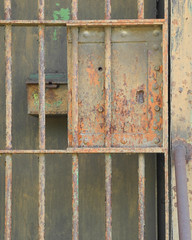 Last May legislation passed in the state of Florida, backed by Sen. J.D. Alexander (R-Lake Wales) among others, was but allowing any Florida county that could meet certain standards to take control of its own juvenile detention.Among other things this allows counties to move minors charged as juveniles into county jails. Two counties in the Sunshine State— Marion and Polk — already have made this change.
Last May legislation passed in the state of Florida, backed by Sen. J.D. Alexander (R-Lake Wales) among others, was but allowing any Florida county that could meet certain standards to take control of its own juvenile detention.Among other things this allows counties to move minors charged as juveniles into county jails. Two counties in the Sunshine State— Marion and Polk — already have made this change.
The state of Florida closed down the Polk Regional Juvenile Detention Center on the 27th of last October, and Polk County Sheriff Grady Judd debuted their new juvenile detention center that same month. Judd vows to cut in half the $3.2 million billed to the county each year by Juvenile Justice.
Treasure Coast sheriffs are not so quick to jump on the bandwagon, as Melissa Holsman of TCPalm reports:
Martin County Sheriff Robert Crowder said the county doesn’t deal with enough juvenile offenders to justify the costs of assuming the entire responsibility of housing juvenile offenders when the option exists to transfer the youths to the regional facility in Fort Pierce.
‘That’s a pretty drastic jump in expenses when you set up a facility,’ Crowder noted. ‘I think it’s a good idea the state is allowing local agencies to deal with this. But we have not done enough research here locally to take a firm position on this .’
Cost is one factor, and politicians on both sides are famous for neglecting to factor in start up costs when presenting their numbers. Another factor is staffing. In this case there were 73 state employees whose positions were put up for grabs by the changeover. Of those 42 put in applications at the new facility after Judd’s urging, and this is where the twist comes in.
You see only nine of them have been approved for hire, one is still pending. The reasons? Michael Pleasant at The Ledger shares the list:
Here’s what the Sheriff’s Office says kept the rest from getting through the hiring process:
Eleven did not pass a polygraph exam. The process involves a lengthy yes-or-no questionnaire and an interview based on the questions while hooked to a lie detector.
Six did not meet the agency’s general order standards, which set guidelines for several things including tattoos and past illegal drug use.
Four did not pass a background check, which could mean their criminal history disqualifies them or information they gave on applications turned out to be false or inaccurate.
One failed a psychological examination required for hire.
Ten withdrew their applications.
Judd has stated that the results of the polygraph tests in particular raised concerns. The state department on the other hand requires a background check, a drug screen and fingerprinting just like Judd’s facility, but does not require a polygraph.
No matter the issues surrounding the changeover there are massive concerns about its effect on Florida’s youth. The lack of specific training in dealing with youth offenders is one of the key arguments against this sort of incarceration.
Jacob Carpenter of The Naples Daily News brings us one vital argument in particular:
Lawanda Ravoira, director of a Jacksonville-based advocacy center for juvenile girls, said jail officials would be particularly unable to support victims of sexual abuse. Research suggests that 70 percent of girls who enter the juvenile justice system have been victims of emotional, physical or sexual abuse.
‘At best, it’s developmentally inappropriate,’ Ravoira said. ‘At worst, it increases the likelihood that young girls will be physically and sexually abused in those facilities.’
Roy Miller, president of the Tallahassee-based Children’s Campaign, a juvenile watchdog nonprofit has stated this new legislation “…sets us back 40 years.”
It is understandable for states and their counties to be finding ways to reduce costs, in this economic climate everyone is doing that. This is exactly why better measures that are more effective in the long term need consideration. Moving to county based incarceration looks initially cheaper but over the long term the truly cost effective approach is rehabilitation.
Image Source: Woody H1, used under it’s Creative Commons license









